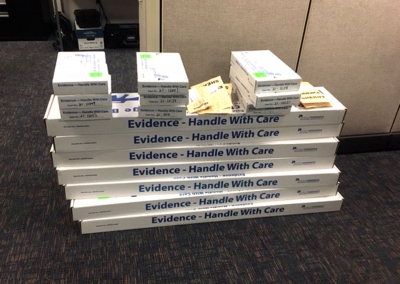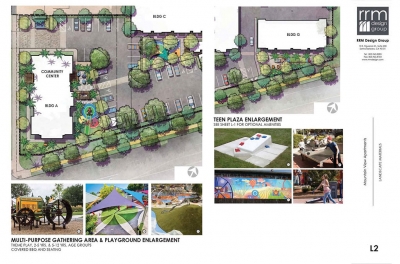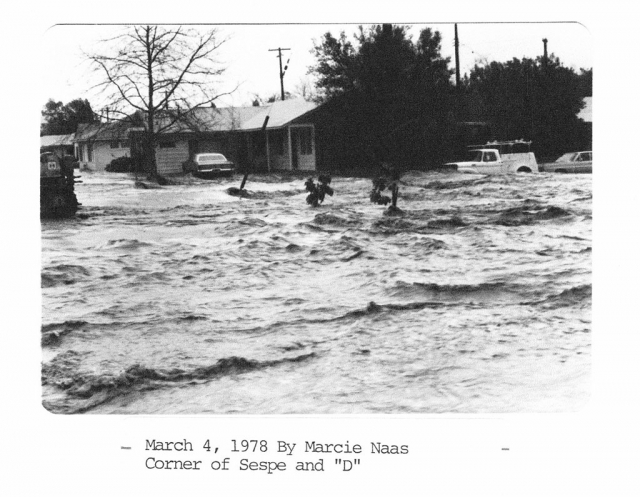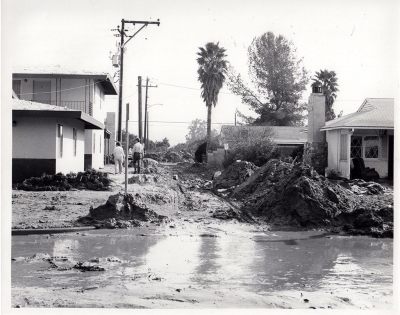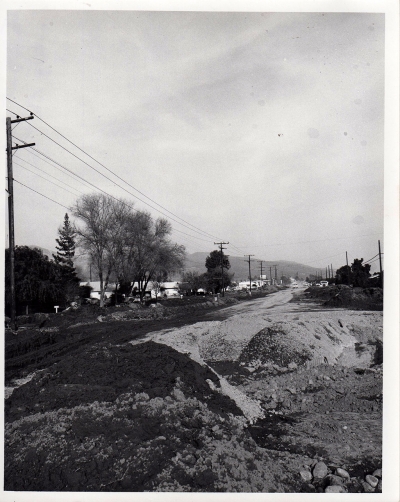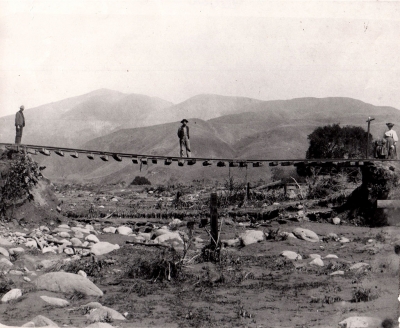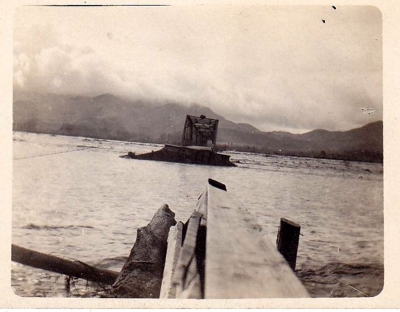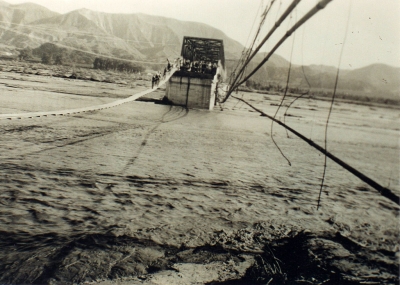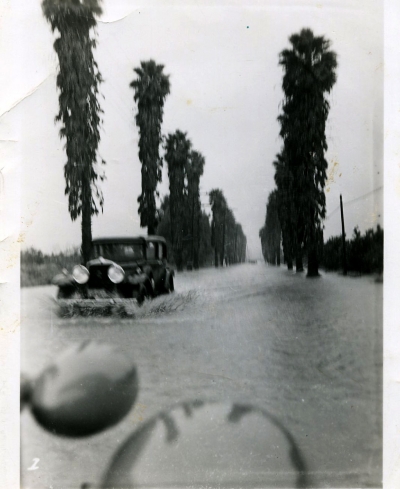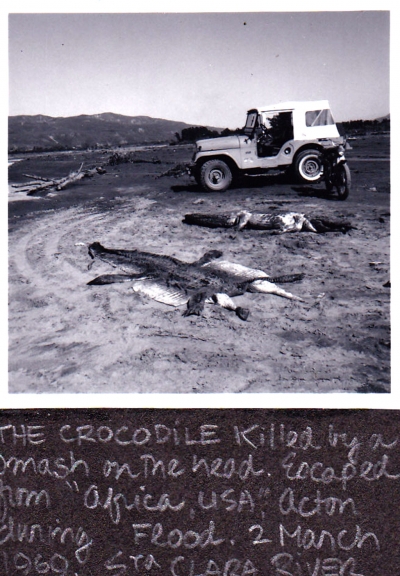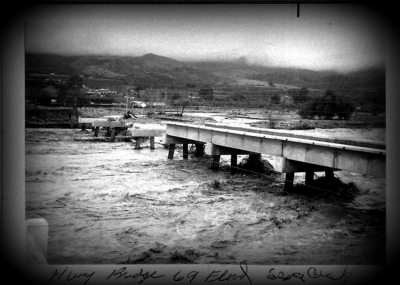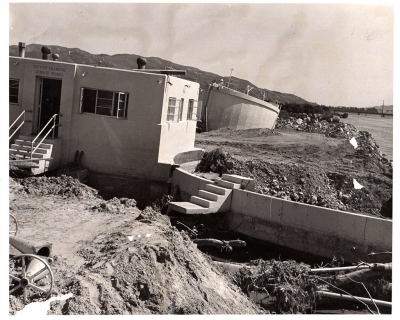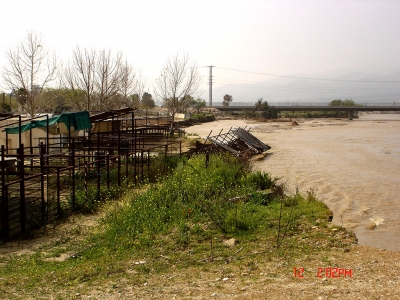|
By Anonymous — Friday, February 5th, 2021
|
 On January 27th the Ventura Sheriff ’s Department hosted a Gun Turn-In which resulted in them obtaining 60 guns for destruction, 7 replica BB guns and approximately 1,000 rounds of ammunition. Photos courtesy Ventura County Sheriff ’s Department. Enlarge Photo By Ventura County Sheriff Department — Wednesday, February 3rd, 2021
On January 27, 2021, the Ventura Sheriff’s Office, and all the cities that contract police services with the Sheriff’s Office, hosted a gun turn-in. This was an opportunity for citizens to turn in unwanted firearms, replica firearms and ammunition for destruction. As a result, 60 guns were turned in for destruction as well as 7 replica BB guns and approximately 1,000 rounds of ammunition. Nature of Incident: Gun Turn-In Results Ventura County Crime Stoppers will pay up to $1,000 reward for information, which leads to the arrest and criminal complaint against the person(s) responsible for this crime. The caller may remain anonymous. The call is not recorded. Call Crime Stoppers at 800-222-TIPS (8477). |
|
By Anonymous — Wednesday, February 3rd, 2021
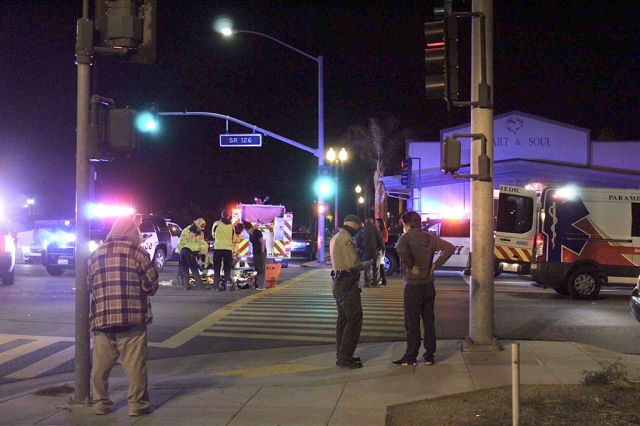 On Tuesday, February 2nd at 8:14 pm Fillmore Police, Fillmore Fire Engine 91 and AMR responded to a traffic collision involving a pedestrian. The accident occurred in the intersection of Ventura St. (Hwy 126) and Central Avenue. The pedestrian was transported to a local hospital, injuries unknown. The cause of the accident is under investigation. Photo courtesy Angel Esquivel - AE News. Enlarge Photo |
|
By Anonymous — Wednesday, February 3rd, 2021
Application period ends February 8
Free application webinars offered daily in several languages. Courtesy City of Fillmore website https://www.fillmoreca.com/Home/Components/News/News/3324/18 Sacramento, CA – California’s Office of the Small Business Advocate (CalOSBA), part of the Governor’s Office of Business and Economic Development (GO-Biz), today announced that Round 2 of the Small Business COVID-19 Relief Grant Program is open. The $500 million program is intended for small businesses and nonprofits impacted by COVID-19. Grants range in size from $5,000 to $25,000. Approximately half of the available funds were awarded in Round 1, with disbursement beginning January 22, and the remainder will be awarded to eligible businesses in this second round. The application portal opened at 8:00 a.m. today and will remain open through 6:00 p.m. February 8. Eligible applicants who submitted all necessary documents in Round 1, but did not receive a grant, will be rolled over for consideration in this second round – there is no need to reapply. "What we are seeing is an unprecedented, urgent need,"said Dee Dee Myers, Director of GO-Biz. "Millions of hardworking Californians, who provide jobs to millions more, need help. Inclusive, equitable relief is fundamental to the small business support this state is providing. Surveys find that without additional funding, more than one in three small business owners will not survive past the next three months, including an astounding 32% of Latinx-owned and 41% of Black-owned businesses. This grant program serves to address an immediate need, but there is so much more that needs to be done. We look forward to the additional grants and loans proposed by the Biden Administration." California’s small businesses employ nearly half of the state’s private sector workforce and create two-thirds of new jobs. At the start of the COVID-19 pandemic, studies showed small businesses were facing low cash flow levels – estimating nearly half of all small businesses had only two weeks of cash flow pre-pandemic. CalOSBA is pleased to share preliminary data from the California Small Business COVID-19 Relief Grant Program's first round of recipients: For more information on grant requirements and eligibility, along with links to application tips and webinars, visit CAReliefGrant.com. About GO-Biz About CalOSBA |
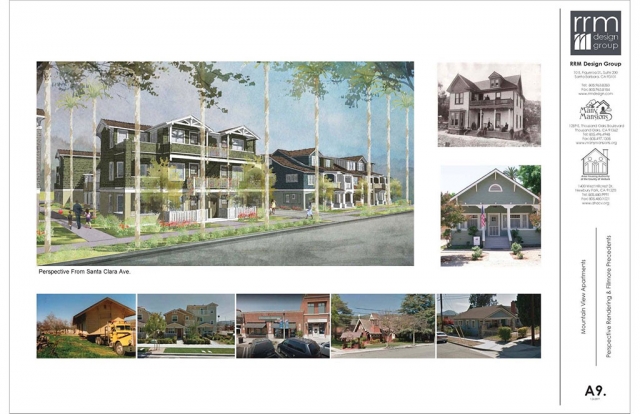 If you expressed interest in seeing if you qualify/apply to live in the new affordable apartments project in Fillmore, Many Mansions created an email address to receive community interest inquiries and for the Fillmore community members to join an interest list. To request to join the interest list: Mountainviewapartments@manymansions.org. Above and below are renderings of the final project when complete. Courtesy City of Fillmore Facebook Page. Enlarge Photo By Anonymous — Wednesday, February 3rd, 2021
Affordable Housing Units Double in Fillmore
Courtesy City of Fillmore Facebook Page Fillmore is the future home of Mountain View Apartments. Many Mansions partners with the Area Housing Authority of the County of Ventura to start construction on their very first affordable housing community in the City of Fillmore. Mountain View Apartments design influence is inspired by Fillmore’s rich history in rail and agriculture and has a timeless agrarian craftsman style. This beautiful development will feature 42 townhome style units with attached garages and 35 flats and walk-ups for a total of 77 apartment homes. There will be 37 one-bedroom, 21 two-bedroom, and 19 three-bedroom apartments, built as workforce housing for very low- and extremely low-income families. There are numerous on-site amenities including but not limited to a spacious community room that will host free after school programs for the resident children and family services such as food assistance and life skills training for the adults. Access to on-site County of Ventura library services will also be available for the tenants. This is a new partnership we look forward to bringing to more of our affordable housing communities. “Many Mansions invests in more than just building apartment homes, we invest in the future of individuals, families and youth through comprehensive whole person support. We will continue to provide affordable housing and support so that everyone can achieve their life dreams.” There will also be lots of outdoor activities such as a playground, outdoor activity center, barbecue/picnic area, community garden, and a bike and pedestrian paths connecting the property to beautiful downtown Fillmore. This development will be a shining example of a high-quality and well-designed affordable housing and a true community asset. |
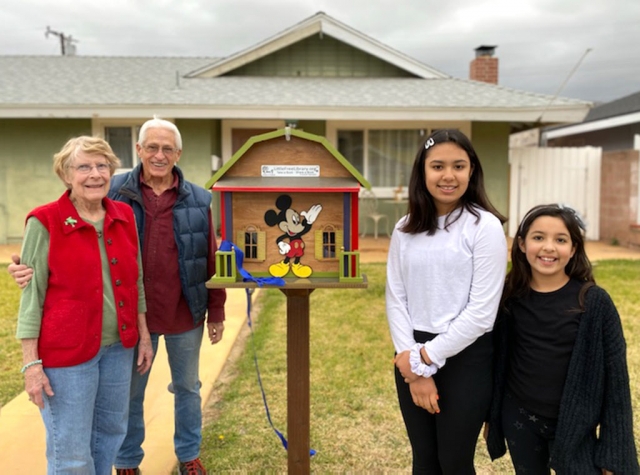 (left) Jolene and Jack Stethem with Yesenia and Alejandra Robles, the proud owners of the newest Free Little Library here in Fillmore which opened at 853 Oliver Street. Enlarge Photo By Anonymous — Wednesday, February 3rd, 2021
The following is a letter to the City of Fillmore from Yesenia and Alejandra Robles about their new Free Little Library. Hello city of Fillmore, Our names are Yesenia and Alejandra Robles and we are the proud owners of the new Little Free Library located at 853 Oliver Sr. in Fillmore. This Little Free Library was made by our friend, neighbor and local artist, Jack Stethem. We hope you enjoy reading as much as we do. You are welcome to read the books, the more you read the smarter you get. We want our Little Free Library to be for all ages, so come on take a book and leave a book. If you would like to donate books, they are welcomed, you can leave them inside the library or you can leave them in front of our house. And remember, “The more that you read, the more things you will know. The more that you learn, the places you’ll go.” - Yesenia and Alejandra Robles |
|
By Anonymous — Wednesday, February 3rd, 2021
Courtesy Fillmore Historical Museum February! This is the time of year when we hope it will rain. When it does, we hope it will be enough and then we hope it won’t be too much. History has shown us that, in Fillmore, it is often the unexpected quantity of rain or its lack that stands out. Local farmers keep exacting records of the date and amount of rain. Was it enough to not have to irrigate? Is the river or creek going to rage through the orchard? Will it interrupt our plans? Over time many rainstorms have left indelible impressions both good and bad. One of the earliest storms mentioned in Ventura County history was the deluge of 1862. Rain was statewide and is referred to in the history books as the “Great California Flood of 1862.” Early photos show Sacramento inundated with flood waters up to the second stories of buildings. Author Yda Addis reported that, here in Ventura County, rain fell for 60 days leaving all the ground saturated and “reeking.” In San Buenaventura, “landslides were frequent” and “houses were submerged or carried away bodily.” Cattle, which were the main source of income in those times were starving. The overflow from the Ventura River was 3 feet deep on Ventura’s Main St. The rains of 1884 were deeply embedded in the memories of those who were living in the Santa Clara Valley at the time. Fillmore had not yet been founded but Santa Paula was a growing city and Ventura well established. According to Lowell Hardison, the rains began with small typical showers in October and November of 1883 allowing the withered grasses of summer to grow and turn the hills green. On January 24th of 1884 it began to rain and continued for 34 hours measuring 15”. From January 31 to Feb 8 it rained every night measuring 20”. Mr. Hardison, assuming that the rains had ended, set off for Los Angeles to purchase a wagon. On the trip home with the new wagon he found 4” of snow on the ground at Newhall and flooding throughout the valley. In a time with no bridges over the creeks and river, they had to leave the wagon and head home on the mules. They found the road up Santa Paula Canyon obliterated with rocks, boulders and debris everywhere. Arriving at home they found the family safe but the cabin nearly wrecked as the wind had forced the rain into the interior. There was debris everywhere, the interior of the cabin was drenched, and the creek behind the cabin was a raging torrent 14 feet deep. A fire was impossible as everything that might burn was wet. They spent the night huddled under blankets trying to stay warm. The Santa Clara River was flooding bank to bank. Animals, buildings and people were caught in the flood. A dog was seen floating down the river on a mattress. One rescue boat was swamped and the survivors succeeded in climbing a tree and were then rescued. Nearly all the bridges in Southern California were swept away. According the newspapers Santa Paula received 40” and Ojai received 70” in just 60 days. Newspapers of the time called it the greatest rainfall ever recorded in the valley. In more modern times, we have had our share of excessive rain and damage here in Fillmore. In 1914, shortly after construction of the bridges across the Sespe and Santa Clara, torrential rain caused them to wash out leaving Fillmore isolated. In 1938 the north approach to the Bardsdale Bridge was washed out. Access from Bardsdale was at first by boson’s chair and then by swinging bridge as a new section of the bridge was built. 1969 once again brought excess rain and flooding to our area with three major storms from January through March. The vulnerable approaches to the Sespe auto bridge and the railroad bridge failed. Landslides were common. The 9 hole golf course located where the school farm is now located was washed out. Los Serenos was flooded for the first time and Pole Creek flooded east of Mountain View as far as Main St. Tragedy struck when a group of Boy Scouts being rescued from the mountains above the Sespe were swept away and killed in the raging Sespe. The oddest result was the damage to Africa USA located above Guiberson Road near Piru. After the rain ended, two crocodiles were found along the Santa Clara and rapidly dispatched so as not to cause a panic should they disappear into the orchards. Los Serenos took a hit again in 1978 when after several months of rainstorms a violent rainstorm sent the Sespe rampaging through the neighborhood when debris formed a dam under the Sespe Auto Bridge. One of our local heavy equipment operators took it upon himself to blow the bridge to release the backed up water. Better to solve the problem and ask forgiveness later. After the citizenry rose up in anger because of the damage, the U.S. Corp of Engineers finally agreed to build the levee which stands today. Most recently, in 2005, heavy rain caused the Santa Clara River to run full from bank to bank. The Sherriff’s office closed the Bardsdale Bridge in midafternoon when the river threatened to wash out the south approach. The river broke through south of the equestrian center, flowed over Hwy23 and back out to the river. As often happened in these wet years there were storms from January through March creating a situation ripe for disaster when the final heavy storms hit. It has now been 16 years since the last major flood event. We’d like our rains to be soft, gentle and enough to wash away the drought. It looks like that won’t happen this year. Just remember that in the case of rain storms, be they mild or heavy, history tends to repeat itself in the Santa Clara River Valley. |
|
By Anonymous — Wednesday, February 3rd, 2021
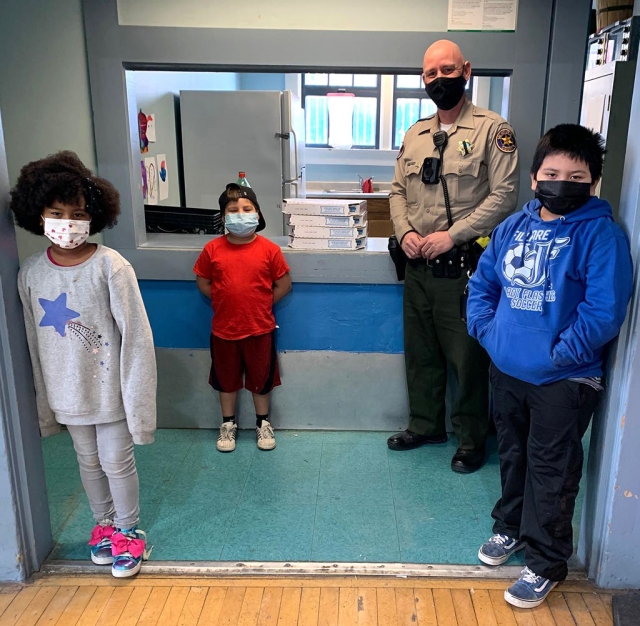 A big shout out to Fillmore’s New School Resource Officer, Jonathan Schnereger, for stopping by Santa Clara Valley Boys & Girls Club in Fillmore and treating our Distant Learning Kids to soda pop and pizza. Courtesy Santa Clara Valley Boys & Girls Club Facebook Page. Enlarge Photo |
|
By Anonymous — Wednesday, January 27th, 2021
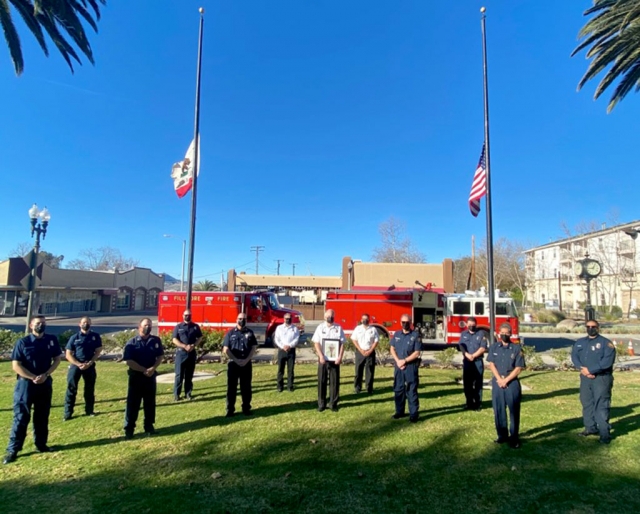 The City of Fillmore Fire Department gathered to honor the passing of Fire Chief George Campbell who selflessly gave his time and leadership for over two decades to the fire department and to the citizens of the City of Fillmore. Thank you for your leadership! Courtesy Fillmore Fire Department. Enlarge Photo |
|
By Ventura County Sheriff Department — Wednesday, January 27th, 2021
Two subjects were contacted by Fillmore detectives during an investigation. Detectives located several bicycles that were believed to be stolen and are requesting the public’s assistance to solve the crimes. On January 20th, at approximately 8:00 a.m., detectives contacted the subject at his Fillmore residence and arrested him for a felony warrant. He was contacted with a transient, Phillip Davison. Both men were found in possession of several bicycles that were believed to be stolen. Detectives linked one of the bicycles to a Fillmore resident that reported his bicycle as stolen in October 2020, and determined Davison was responsible for the crime. The Fillmore resident was booked into the Ventura County Main Jail in Ventura for violations unrelated to the bicycle theft and held on $50,000 bail. Davison was cited and released for HS 11550(a) – Under the Influence of a Controlled Substance and PC 484(a) – Petty Theft. If you believe one of the attached bicycles is yours, or if you have any information about the theft of these bicycles, please contact the Detective Cesar Salas at (805) 524-2234. The Sheriff’s Office is also asking residents to be aware of the rise in recent bicycle thefts and to keep all unattended bicycles locked or in a secure location to prevent thefts. Nature of Incident: Bicycle Theft Arrest / Request for Public Assistance |




